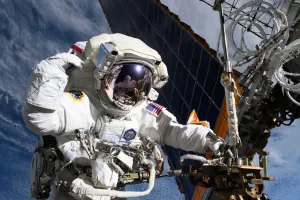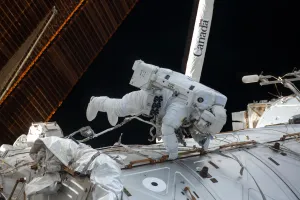Next‑Gen Space Exploration: The Latest from NASA and American Space Startups”

SpaceX Launches TRACERS Mission from Vandenberg
On July 22, 2025, at 11:13 a.m. PDT, SpaceX launched NASA’s TRACERS mission—alongside three other payloads—from Vandenberg Space Force Base in California. The mission includes two identical satellites aimed at studying magnetic reconnection in Earth’s magnetosphere. This mission will help scientists better understand how solar wind enters our near‑Earth space and triggers phenomena like auroras, especially in regions near the polar cusp
Local residents in Southern California can expect sonic booms about eight minutes post‑launch as the Falcon 9’s first stage returns to land at SpaceX’s Landing Zone 4. Authorities emphasize these booms are harmless and routine with reusable rocket operation
Space Weather Breakthroughs with TRACERS
The TRACERS satellites, developed in collaboration with UC Berkeley and UCLA, will complete around 3,000 passes through the cusp region in one year. By measuring electric and magnetic fields in tandem, the mission aims to refine forecasts for solar storms—crucial for mitigating infrastructure damage from geomagnetic events like the May 2024 storm that caused nearly $500 million in agricultural losses
NASA‑ISRO NISAR Satellite Launch Scheduled
On July 30, 2025, the world’s most expensive Earth‑observation satellite—NISAR—is set to launch from Sriharikota. A joint venture between NASA and ISRO, the $1.5 billion spacecraft will use dual‑frequency radar to image Earth’s surface every 12 days with centimeter-level precision. Its data will support climate science, disaster response, and land‑use monitoring, showcasing deepening U.S.–India cooperation in space technology .
NASA Employee Protest over Budget Cuts
On July 21, 2025, exactly 56 years after Apollo 11’s moon landing, 287 NASA employees (both current and former) published the “Voyager Declaration”, criticizing proposed fiscal cuts amounting to up to a 24% reduction in NASA’s 2026 budget. They warned that underfunding could endanger astronaut safety and derail flagship missions such as the Mars Sample Return, Space Launch System, and Nancy Grace Roman Telescope .
NASA’s press office affirmed that safety-critical roles will be preserved, but employees remain concerned that deep cuts and layoffs by the Department of Government Efficiency (DOGE) could cause irreversible harm .
Progress on NASA’s X‑59 QueSST Supersonic Jet

NASA’s X‑59, part of the QueSST program with Lockheed Martin, has successfully completed low-speed taxi tests in Palmdale, California. The aircraft—nicknamed the “son of Concorde”—is designed to reduce supersonic boom noise to a soft “thump,” potentially allowing supersonic travel over land. Its first flight is expected later in 2025, with future commercial applications in passenger aviation .
SpaceX’s Bold Plans: Starship, Starfall & Mars Timeline
SpaceX continues pushing toward a future Mars mission, targeting an uncrewed flight as early as 2026, followed by a crewed Mars mission around 2029. The company is also developing Starfall—a program exploring space-based manufacturing of pharmaceuticals, semiconductors, and food using Starship technology. If successful, space-made products could contribute $100 billion to the global space economy by 2035 .
Meanwhile, SpaceX plans to conduct up to 25 Starship launches per year, after receiving final FAA approval. Recent Starship test flights have faced setbacks, but another is anticipated within weeks .
Starlink Launch Surge & Reusability Milestones
SpaceX is ramping up its Starlink constellation in 2025. By May 20, over 1,000 satellites had been placed in orbit—averaging over 250 satellites per month—through 42 dedicated launches. This has made Starlink the largest satellite network ever built, boosting global broadband coverage, including in underserved regions like Alaska
With 170 orbital launches targeted this year—nearly one every other day—SpaceX is on track to break its 2024 record. A landmark reuse milestone came when a Falcon 9 booster flew again after only nine days, proving its reliability even for sensitive national security payloads .
Crewed Missions: SpaceX Crew‑10 Docking with ISS
Launched on March 14, 2025, SpaceX Crew‑10 delivered NASA astronauts Anne McClain and Nichole Ayers, JAXA’s Takuya Onishi, and Roscosmos cosmonaut Kirill Peskov to the International Space Station. The mission is slated to return in August 2025, marking the first splashdown recovery of a Crew Dragon mission in the Pacific Ocean
READ THIS ALSO——http://Best 5 popular electric bike of 2025
Other Key NASA Missions in 2025
Beyond high-profile launches, some pivotal NASA missions are on track:
-
SPHEREx, a near‑infrared observatory, launched on March 12, 2025, from Vandenberg aboard a Falcon 9, beginning an all-sky survey of over 450 million galaxies
-
Europa Clipper, launched in October 2024, is en route to Jupiter using gravity assists—including a Mars flyby in March 2025 and an Earth flyby in December 2026—with arrival at Europa expected in April 2030
-
NASA’s IMAP (Interstellar Mapping and Acceleration Probe) is now scheduled for launch no earlier than September 2025, carrying instruments to study the boundaries of our heliosphere and the impact of cosmic rays on space weather